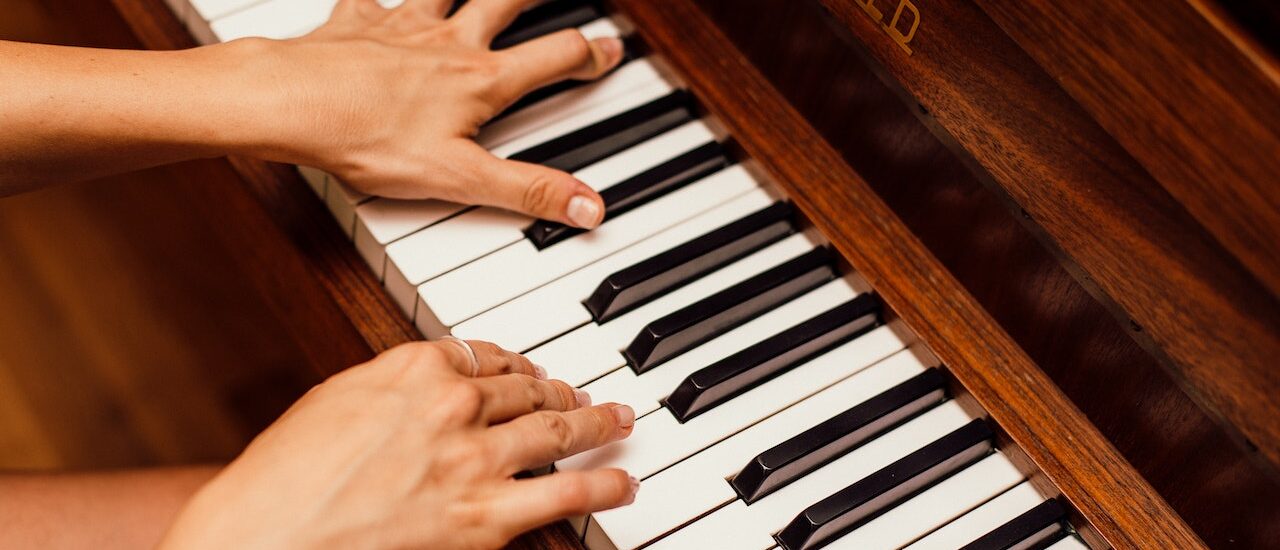Relocating a piano is not just about moving a heavy object from one place to another. It’s about ensuring the safe transportation of an instrument that holds both sentimental and monetary value. In Oakland Park, FL, the demand for specialized piano movers has grown as residents recognize the importance of hiring experts for such a delicate task.
Whether you own a grand, upright, or any other type of piano, it’s crucial to entrust its relocation to professionals who understand its intricacies. Stride Movers, known for their meticulous attention to detail and unparalleled expertise, stands out as a top recommendation in this niche. In this article, we’ll delve deep into why they are considered among the best piano movers in Oakland Park, FL, and what you should look for when hiring a piano moving service.
The Importance of Specialized Piano Moving in South Florida
Moving a piano is a task that requires more than just muscle; it demands expertise, precision, and a deep understanding of the instrument. Here are seven reasons why specialized piano moving is crucial:
- Weight & Size: Pianos are heavy and bulky, making them challenging to maneuver.
- Delicate Internals: The internal mechanisms of a piano are intricate and can be easily damaged.
- Value: Pianos often have significant monetary and sentimental worth.
- Tuning Stability: Pianos can go out of tune if not handled correctly during transit.
- Environmental Sensitivity: Pianos can be affected by temperature and humidity changes.
- Navigational Challenges: Moving pianos through tight spaces or stairs requires expertise.
- Safety: Incorrect handling can lead to injuries or damage to the property.
Given these challenges, it’s clear that when moving a piano, specialized expertise is not just beneficial but essential.
Types of Pianos and Their Moving Needs
Pianos, with their majestic presence and melodious charm, come in various shapes and sizes. Each type has its unique characteristics and, consequently, distinct moving requirements. Understanding these differences is crucial for ensuring their safe and efficient relocation.
1. Grand Pianos
Grand pianos are large, horizontal instruments with strings that run parallel to the floor. Often considered the pinnacle of piano design due to their superior sound quality, they present unique challenges when it comes to moving. Their size and shape necessitate specialized equipment like skid boards and piano shoes. Additionally, the legs and pedal lyre often need to be removed for safe transport. Given their weight, it’s typical to require multiple movers to handle a grand piano safely.
2. Baby Grand Pianos
A smaller version of the grand piano, the baby grand, is equally elegant but more suited for homes or smaller venues. When it comes to moving, they share many of the requirements of their larger counterparts. Like the grand piano, baby grands require the careful dismantling of legs and pedal lyre. While they might be smaller in stature, they still demand the attention and care of a full-sized grand during the relocation process.
3. Upright Pianos
Upright pianos, also known as vertical pianos, stand tall with strings running vertically. Their compact design makes them a common choice for homes and educational institutions. Moving an upright piano presents its own set of challenges. While they don’t require as much dismantling as grand pianos, their weight distribution is different. Specialized dollies are often used for transport, and it’s crucial to secure the piano lid to prevent any internal damage.
4. Spinet Pianos
The spinet is the smallest member of the upright piano family. Its compact size makes it a popular choice for those with space constraints. However, when it comes to moving, appearances can be deceiving. Despite its smaller size, the spinet piano still carries significant weight. It’s essential to approach its relocation with the same level of care and expertise as any other piano to ensure its safety during transit.
Read More: Benefits of Hiring Professional Movers in Deerfield Beach
Stride Movers: Setting the Gold Standard in Piano Moving
In the realm of piano relocation, Stride Movers has carved a niche for itself, emerging as the go-to expert for many. Their reputation is built on a foundation of expertise, dedication, and an unwavering commitment to ensuring the safe and efficient transport of these cherished instruments. Let’s delve into what sets Stride Movers apart in the world of piano moving:
- Reputation: Stride Movers has earned acclaim for consistently delivering top-notch piano moving services, garnering trust and loyalty from clients.
- Expertise: With a team of trained professionals, they possess deep knowledge about the intricacies of different piano types and their moving needs.
- Equipment: Stride Movers invests in state-of-the-art equipment, ensuring that pianos are handled with the utmost care and precision.
- Customized Plans: Recognizing that every piano move is unique, they tailor their approach to suit individual client needs.
- Safety First: Prioritizing the safety of the instrument, Stride Movers employs techniques that minimize any risk of damage during transit.
- Client-Centric Approach: Beyond just moving, they focus on providing a seamless experience for clients, addressing concerns and ensuring peace of mind.
- End-to-End Service: From initial consultation to the final setup in the new location, Stride Movers offers comprehensive services, making them a one-stop solution for all piano moving needs.
Key Features to Look for in a Piano Moving Service
Choosing the right piano moving service is pivotal to ensuring the safety and integrity of your cherished instrument. It’s not just about moving a heavy object; it’s about understanding the nuances of a delicate and valuable piece. Here are the essential features to consider when selecting a piano moving service:
- Specialized Equipment: The service should have the right tools, from skid boards to piano shoes, ensuring safe and efficient transport.
- Expert Personnel: Trained and experienced staff who understand the intricacies of pianos and their unique moving requirements.
- Comprehensive Insurance: A guarantee that in the rare event of damage, the costs are covered, offering peace of mind to the client.
- Positive Testimonials: Look for genuine customer reviews that attest to the company’s reliability, professionalism, and expertise.
- Transparent Pricing: Clear and upfront pricing without hidden charges, ensuring you get value for your money.
- Consultation Services: A company that offers pre-move consultations to understand and plan the move better.
- After-Service Support: Post-move services like tuning or minor repairs showcasing the company’s commitment to complete customer satisfaction.
The Process of Moving a Piano: A Step-by-Step Guide
Relocating a piano is a meticulous process that requires more than just physical strength. It’s a blend of understanding the instrument’s delicate nature, employing the right techniques, and ensuring its safe transition to its new home. Let’s walk through the comprehensive steps involved in moving a piano:
1. Initial Assessment and Consultation
Before any actual moving takes place, it’s crucial to assess the piano’s size, type, and condition. This step involves understanding the client’s requirements, the piano’s current location, and its destination. Factors like staircases, door widths, and the distance of the move play a significant role in determining the complexity and cost of the move.
2. Preparation and Dismantling (if required)
Once the initial assessment is done, the piano is prepared for the move. This might involve removing its legs, pedal lyre, and music rack, especially for grand pianos. The keys are usually locked to prevent any accidental opening, and the entire instrument is wrapped in protective blankets or padding to shield it from any potential damage.
3. Safe Loading
With the piano prepared, the next step is to safely load it onto the moving vehicle. Specialized equipment, such as piano dollies or skid boards, is used to ensure the instrument is moved without strain or risk. The piano is then carefully positioned in the moving truck, ensuring it’s stable and won’t shift during transit.
4. Secure Transportation
Transporting the piano is more than just driving from point A to B. It’s about ensuring the route taken is smooth, avoiding any bumps or rough terrains that could jostle the instrument. The moving vehicle is often equipped with suspension systems and climate control to provide the piano with a stable and suitable environment.
5. Unloading at the Destination
Upon reaching the destination, the same care and precision are employed to unload the piano. The process is reversed, with the piano being carefully taken off the moving vehicle, ensuring no harm comes to it.
6. Setting Up at the New Location
The final step involves setting up the piano in its new location. If it was dismantled, this is where it’s reassembled, ensuring every part is correctly reattached. Once set up, it’s advisable to let the piano acclimatize to its new environment for a few days before tuning.
By following this detailed process, one ensures that the piano’s relocation is not just efficient but also safe, preserving the instrument’s integrity and sound.
Read More: Packing and Unpacking Services in Deerfield Beach
Cost Implications: Getting Value for Your Money
When it comes to moving a piano, understanding the cost implications is vital. While everyone wants to save money, it’s essential to recognize that the safety and integrity of your cherished instrument are paramount. Let’s delve into the factors that influence the cost of moving a piano and why opting for the cheapest option might not always be the wisest choice:
- Piano Type & Size: Larger pianos, like grand pianos, typically cost more to move than smaller uprights due to the additional labor and equipment required.
- Distance of the Move: Local moves are generally cheaper than long-distance or international relocations.
- Complexity of the Move: Navigating tight spaces, stairs, or challenging terrains can increase the cost due to the added risk and effort.
- Dismantling & Reassembly: Some pianos may require partial dismantling for transport, adding to the labor cost.
- Insurance Coverage: Opting for comprehensive insurance (highly recommended) can add to the overall cost but offers peace of mind.
- Special Equipment: The use of specialized equipment, like cranes for high-rise apartments, can influence the price.
- Experience & Reputation: Established and reputable movers might charge a premium, but they bring expertise and reliability to the table.
While it might be tempting to go for the cheapest quote, it’s essential to weigh the risks. A mishandled move can result in damage to your piano, often costing more in repairs than what you might save initially. It’s a classic case of “you get what you pay for,” so prioritize quality and expertise over cost alone.
Additional Services: Beyond Just Moving
While the primary concern when relocating a piano is its safe transport, there are other services that can complement and enhance the moving experience. These additional services not only ensure the piano’s safety during the transition but also its optimal performance and longevity in its new environment. Let’s explore some of these supplementary offerings:
- Climate-Controlled Storage: For those in between moves or awaiting their new space to be ready, climate-controlled storage ensures the piano remains in an environment that preserves its integrity.
- Short-Term & Long-Term Storage: Depending on the client’s needs, storage solutions can range from a few days to several months or even longer.
- Tuning Services: After a move, pianos often require tuning to adjust to their new environment and ensure optimal sound quality.
- Maintenance Check: A post-move maintenance check can identify any potential issues resulting from the move, ensuring they’re addressed promptly.
- Cleaning Services: Some movers offer specialized cleaning to remove any dust or debris accumulated during the move.
- Refinishing & Restoration: For older pianos or those that might have suffered minor cosmetic damage, refinishing services can restore their former glory.
- Lessons & Workshops: Some piano moving companies, recognizing their clients’ passion for music, offer lessons or workshops to help them get acquainted with their instrument in its new setting.
These additional services, while not always necessary, can provide added value and peace of mind, ensuring your piano not only reaches its new home safely but thrives in its new environment.
Conclusion
The journey of relocating a piano is not just about moving an object from one place to another; it’s about ensuring the safe and seamless transition of a cherished instrument that holds both sentimental and monetary value. The importance of specialized services cannot be overstated. Just as you wouldn’t trust a general practitioner to perform heart surgery, you shouldn’t trust just any mover with your piano.
Before making a decision, it’s crucial to do thorough research. Look for reviews, ask for recommendations, and ensure that the company you choose has a proven track record of handling pianos with the care and expertise they deserve.
Your piano deserves the best. Don’t leave its fate to chance. Get in touch with Stride Movers today for a consultation or a quote, and ensure your precious instrument is in the hands of professionals who truly understand its value.
FAQs
The duration varies based on the type of piano, distance, and specific challenges of the move. However, most local moves can be completed within a day.
While it’s not mandatory, it’s advisable to be present to oversee the process and address any immediate concerns.
Yes, due to the physical movement and potential changes in the environment, it’s recommended to have your piano tuned post-relocation.
Absolutely. Given the value of pianos, having comprehensive insurance ensures you’re covered in the rare event of damage.
Yes, Stride Movers is equipped and experienced in handling both local and long-distance relocations for pianos.




